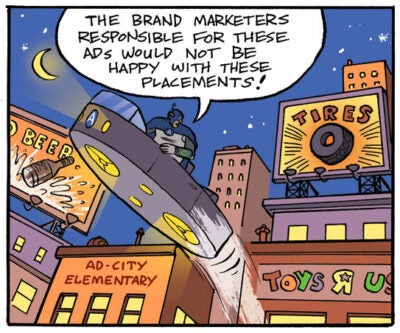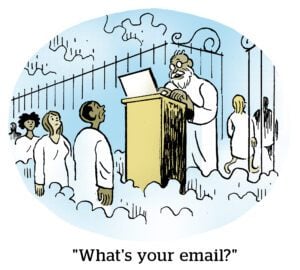When publishers complain about brand safety, it’s usually in the context of keyword blocklists that automatically – and mindlessly – block content from monetizing programmatically on the open web.
But these controls can also have a detrimental effect on a publisher’s direct ad sales.
Publishers, such as The Arena Group, are now partnering directly with brand safety solution providers to lower their block rates for direct-sold inventory.
Although The Arena Group, which owns Sports Illustrated and TheStreet, was founded as a programmatic-first company, it’s been focused on growing its direct sales business for the past few years, said Reginald Hudson, VP of advertising operations.
Direct sales became an even bigger priority in December with Arena’s acquisition of Men’s Journal, which had a strong direct-sales business.
But The Arena Group began to notice that, even in direct deals, a portion of its inventory that otherwise adhered to a campaign’s targeting criteria was being flagged as brand unsafe.
What a waste
Arena was wasting impressions – and time.
There was a lot of back-and-forth with advertisers trying to identify ad inventory that was being unfairly dinged for brand safety violations.
For example, The Arena Group regularly works with an advertiser in the insurance vertical that has very strict brand safety criteria. Arena would consistently see a roughly 30% block rate for inventory that otherwise aligned with the advertiser’s target audience, Hudson said.
To hit impression targets for that advertiser’s campaigns (and others), Arena would engage in “overbuffering,” which is the practice of serving more impressions than necessary to try to hit a goal.
But having to serve, say, 130,000 impressions to get credit for 100,000 contracted impressions isn’t sustainable or efficient. It wastes server resources and produces unnecessary emissions. (Not a good look amid an industrywide push for greener digital marketing.)
It’s also overly time consuming for publishers to manually add brand safety filters to ad inventory line items for individual campaigns.
“Your ad ops team would literally be going from line item to line item, having to add in multiple key values and swapping those in and out to see what limits your block rate,” Hudson said. “There’s a lot of chance for error there.”
Unblocked
To deal with this problem, The Arena Group started testing a solution from DoubleVerify late last year called Authentic Direct, which is part of DoubleVerify’s sell-side platform. (Authentic Direct became generally available on Wednesday.)
The tool, which is designed for direct sales, identifies content that aligns with an advertiser’s safety and suitability criteria, then adds the relevant brand safety key value to the publisher’s ad inventory line items automatically.
Using the solution, The Arena Group saw the block rate for that aforementioned insurance brand’s campaigns drop from over 30% to less than 5%, according to Hudson.
“That meant we were automatically targeting to inventory that checked all the boxes for [their safety and suitability parameters],” he said.
After integrating with Authentic Direct, The Arena Group saw a 92% decrease in overall block rates – and blocks due to brand suitability discrepancies fell by 97% within 12 hours of adding the solution.
In the four months since the implementation, Arena has maintained a daily brand suitability block rate of less than 1%.
The Arena Group is hoping that it’s now in a position to drum up more direct business with new advertising partners. It’s already had some success in that regard.
“We have generated new business from an agency that wasn’t working with us before,” Hudson said. “This is an advertiser that understood that we have brand-safe sites, but now they have added verification that [their campaigns] will be aligned to that specific type of content.”



















